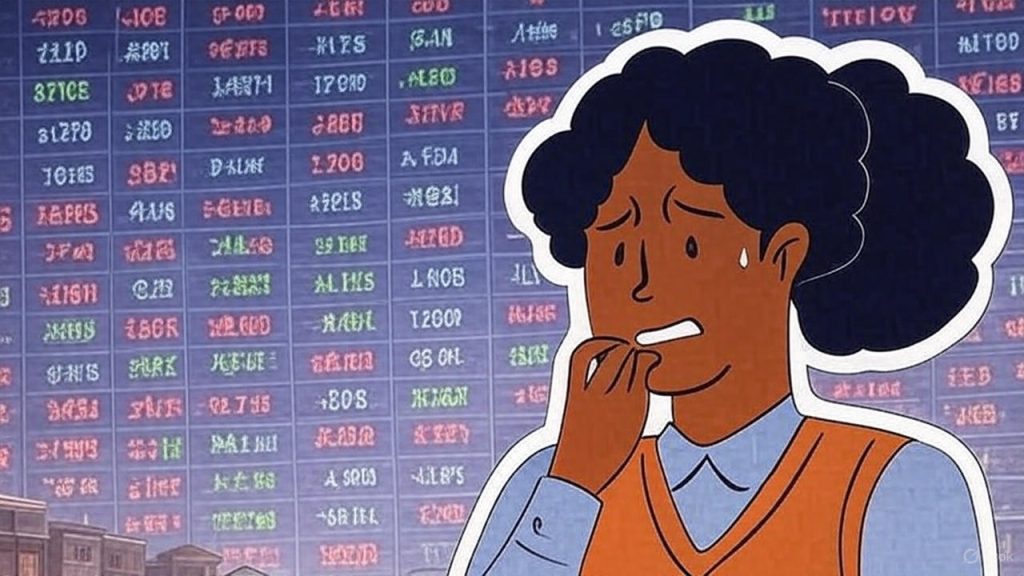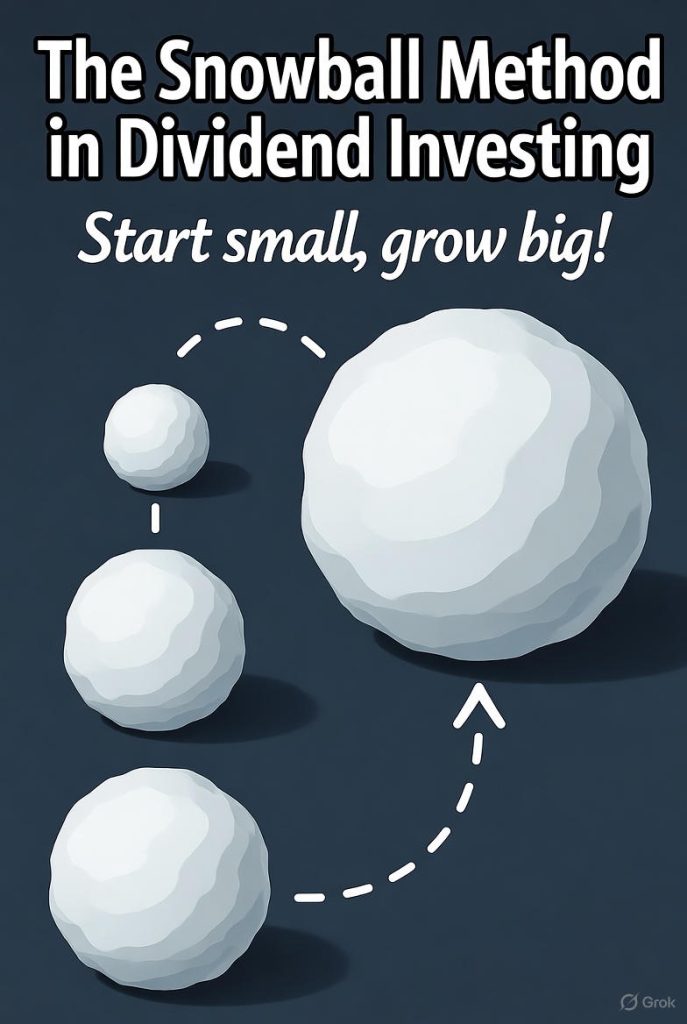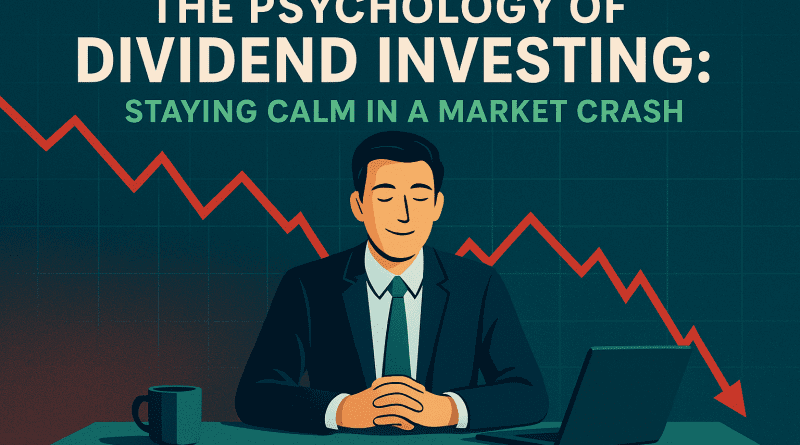The Psychology of Dividend Investing: How to Stay Calm in a Market Crash
The Psychology of Dividend Investing is very easy to understand. When markets crash, panic often takes center stage. Red charts, falling portfolios, and financial news headlines warning of “the next big collapse” can easily trigger fear. But for dividend investors, the key to long-term success isn’t reacting to every market dip, it’s mastering the psychology of staying calm.
Dividend investing, by nature, rewards patience and consistency. Understanding how your mind responds during downturns can help you make smarter, more confident decisions even when the world feels uncertain. For example, with recent events this year, it can easily cause you to panic when you see the market drop dramatically. One moment you are green and the next complete red. It is a stressful thing to witness and worse, to experience it. However, taking an objective look and taking a step back can help you overcome your negative feelings and ride out the wave.
Why Market Crashes Feel So Personal

When the market drops, your brain interprets the loss as pain. Studies in behavioral finance show that people feel the pain of losing money about twice as strongly as the pleasure of gaining it.
This emotional imbalance is known as loss aversion, and it’s one of the biggest reasons investors panic-sell during downturns. The fear of losing everything can be extremely powerful. It is this fear that drives so many to sell and lose out on profits or money.
In reality, a market crash doesn’t mean your dividend strategy is broken. Prices may drop, but as long as your companies continue paying dividends, your income stream remains intact.
That’s the mindset shift: stop focusing on the stock price, and start focusing on the cash flow. If you own solid companies like Coca Cola (KO) or McDonalds (MCD), their share price dropping will have no effect on you. They will still pay you a dividend so you are safe. These types of stocks and this mindset will save you in the end.
Understanding What You Actually Own
One of the most effective ways to stay calm is to remember what you’re investing in. When you buy shares of dividend-paying companies, you’re not just buying ticker symbols, you’re becoming a partial owner in real businesses. These businesses produce products, earn profits, and distribute a portion of those profits back to you as dividends.
During a crash, prices can fall for reasons that have little to do with your companies’ fundamentals. If Coca-Cola (KO), Johnson & Johnson (JNJ), or Procter & Gamble (PG) keep selling products and generating cash, their dividends are likely to continue.
In other words, short-term fear doesn’t necessarily reflect long-term value. This mindset helps separate temporary market noise from permanent company performance.
Focus on Dividends, Not Price Volatility
Here’s a truth seasoned dividend investors understand: your portfolio’s value may fluctuate, but your income doesn’t have to. Many high-quality dividend companies have a track record of paying, and even increasing their dividends during recessions. These are often called Dividend Aristocrats, companies that have raised their dividends for 25+ consecutive years.
For example, during the 2008 financial crisis, companies like McDonald’s, PepsiCo, and Johnson & Johnson still increased their dividends despite global market panic. By focusing on the consistency of income rather than short-term prices, you train your mind to see the bigger picture. When your goal shifts from “watching numbers go up” to “collecting reliable income,” volatility becomes less frightening.
The Power of Automatic Investing

Automation removes emotion. Setting up automatic dividend reinvestment (known as DRIP) or scheduled monthly investments helps you stick to your plan even when emotions run high.
During a market crash, your automated buys actually work in your favor, because you’re purchasing shares at discounted prices. This approach, known as dollar-cost averaging, smooths out volatility and reduces the urge to time the market.
Remember: trying to “wait for the bottom” is nearly impossible. Even professional investors rarely time it perfectly. Automatic investing keeps you disciplined while your dividends quietly compound.
Practice the Long-Term Mindset
Dividend investing is not a get-rich-quick strategy; it’s a wealth-building system powered by time and patience.
Every reinvested dividend buys more shares, which in turn generate even more dividends. This compounding effect becomes incredibly powerful over years, not weeks. This mindset has an added benefit of pushing you to buy more when you see red because you know the company will rebound. For example, 30% – 35% in some surveys see dips as buying opportunities. (They are not panicking, they are opportunistic). This means people with a long-term mindset end up buying when they see blood in the water.
On the flip side to this, in some surveys, 50% – 60% or more of investors polled that they tend to hold through corrections. These are investors who do not sell in panic, and often believe in recovery. This is not a bad strategy if you want to wait and see. However, for me, if I see red, I am buying.
During market crashes, remind yourself of your long-term goals. Ask:
- Has my investment thesis changed?
- Are my dividend-paying companies still profitable?
- Do I still believe in the industries I’ve invested in?
If the answers are “yes,” then a market downturn is simply a temporary storm, not a reason to abandon ship.
As Warren Buffett famously said:
“The stock market is a device for transferring money from the impatient to the patient.”
Build Emotional Resilience Through Knowledge
The more you understand how markets work, the less intimidating volatility becomes.
Study historical data: every major market crash in history, from the Great Depression to COVID-19—was followed by recovery. Over time, the market has always trended upward, rewarding those who stayed invested.
You can also build emotional resilience by:
- Keeping a watchlist of reliable dividend payers
- Avoiding constant portfolio checks during downturns
- Reading annual reports instead of news headlines
- Talking with like-minded investors who focus on fundamentals
The goal is to train your mind to think like an owner, not a trader.
Turn Fear Into Opportunity
Every crash presents opportunities. When prices drop, yields often rise, meaning you can buy quality dividend stocks at a discount and lock in higher income for the future.
Think of market crashes not as disasters, but as sales on assets you already believe in.
If you’ve done your homework and chosen fundamentally strong companies, these moments can accelerate your path to financial freedom.
Final Thoughts
The psychology of dividend investing is rooted in patience, discipline, and faith in the long-term power of compounding. Market crashes will always come and go, but investors who stay calm, stay invested, and stay focused on dividends often come out stronger. By managing your emotions, trusting your process, and focusing on income instead of panic, you can weather any storm, and continue building lasting wealth, one dividend at a time.
I hope my 2 cents helped you through current events. Thanks for reading.
Sponsor
Check out our friends: Costco Cash Back Rewards: What You Need To Know. Clever Dude is a personal finance blog that offers practical advice on managing money, family, and life. Founded in 2006, it provides straightforward content on topics such as budgeting, debt reduction, frugal living, and lifestyle tips. The blog aims to help readers make smarter financial choices through relatable and actionable insights.
